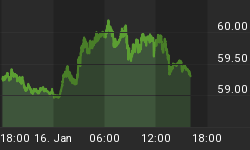With a total of $13.21 trillion in debt, shared among 300 million people, or some $137,063 in debt per household, Americans still aren’t willing to give up any luxuries, whether it’s frequent trips to Taco Bell, a streaming service to binge on HGTV, or horror of horrors, unlimited data smart phones.
The American appetite for debt, thus, is solidified. Debt just doesn’t bother us as much as it used to.
Tally recently conducted a survey of more than 2,000 U.S. adults, composing a list of top 10 things they wouldn’t be willing to sacrifice for a debt-free life.
The number one thing is the mobile phone, which some 52% of those surveyed said they would never give up.
This was closely followed by car ownership (even in the ride-sharing era, which they also won’t give up), dining out, various subscription services and vacations.
Streaming subscriptions and occasional dining out aren’t likely the main reasons for America’s massive debt, but every little bit helps chip away at the mountain.
Why are we in so much debt? The cost of living, and staying alive, is rising exponentially.
A recent study published in the American Journal of Public Health showed that 66% of all bankruptcies are tied to medical issues. An estimated 530,000 families in the US turn to bankruptcy each year because of medical issues and bills.
Over the past 10 years, medical expenses have grown 33%. Since 2003, they skyrocketed by 57%. Since 1984, they’ve increased by an untenable 740%. And it will get worse. Over the next decade, overall healthcare costs are expected to rise 5.5% year-on-year.
People without insurance, or those with high deductibles, often cannot reasonably afford their medical bills, which they end up paying with credit cards, compounding debt for a lifetime. One in six Americans have past-due health care bills on their credit report.
The overall cost of living in the U.S. has also risen 30% over the past 13 years. Food and housing costs have climbed 36% and 32%, respectively, while education costs are up 26%. U.S. student loan borrowers, some 45 millions of them, owe $1.6 trillion in federal and private student loan debt. According to the Federal Reserve's latest numbers, the average American household carries $137,063 in debt. Yet, the U.S. Census Bureau reports that the median household income was just $63,179.
To say we are living beyond our means is an understatement, and one that giving up a cell phone isn’t likely to reverse.
Related: 3 Oil Stocks Paying Out Promising Dividends In 2020
Still, there are plenty of ways to save for anyone willing to sacrifice until that time when the other shoe drops and someone fixes the broken healthcare system, or realizes definitively that the country will soon become undereducated due to the cost of going to college.
Until then, it’s up to the individual American to do things like forego restaurants, cancel a few subscriptions, carpool, switch to generic brands … and stop trying to keep up with the social media Joneses.
According to Schwab’s 2019 Modern Wealth survey, 49% say social media has influenced them to spend money they don’t have on ‘experiences’. Some 48% say they’ve overspent when sharing experiences with friends, whether it’s dining out or going on a group vacation.
A similar study conducted by Allianz Life showed that some 60% of millennials said they’ve had feelings of inadequacy about their lives because of what they’ve seen on social media. The same percentage said that social media caused them to spend money due to a fear of missing out, our beloved and destructive FOMO.
So what about savings? Not much. Almost 60% of Americans have less than $1000 stashed away for a rainy-day fund or an emergency.
According to a recent GoBankingRates survey, only 21% of Americans have more than $10,000 in savings, while nearly 32% have nothing saved at all.
No one’s learned much of anything in the 10 years since the Great Recession left so many Americans jobless and penniless. All we’ve learned is to spend, and keeping up with the Joneses has now expanded thanks to social media. It’s not just about those in your immediate vicinity. Now there is pressure to keep up, universally.
By Anes Alic for SafeHaven.com

















